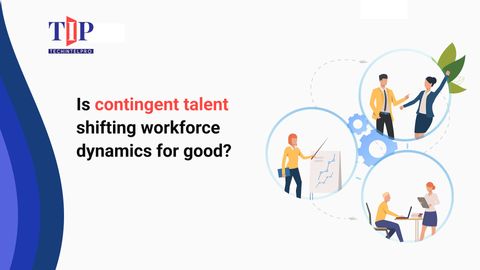The contingent workforce, including contractors, freelancers, and temporary staff, is complex to manage. Without proper processes, organizations risk compliance issues and inefficiencies.
Work has changed a lot in recent years, with more people choosing flexible roles. The pandemic only sped up this shift, making contingent workers a key part of many businesses. But managing them isn’t the same as managing full-time staff. That’s why having a clear contingent workforce management (CWM) program is now so important.
Why It Matters?
Businesses are no longer built solely around full-time employees nowadays. A significant portion of today's workforce is comprised of freelancers, contractors, and gig workers who offer specialized skills and flexibility.
This presents new and exciting opportunities. On the other hand, it also complicates how organizations manage the effectiveness of talent acquisition processes.
This is where Contingent Workforce Management (CWM) solutions come into consideration, as they facilitate organizations with the visibility, control, and structure to manage their non-permanent talent.
To manage non-permanent talent effectively, organizations often rely on a Vendor Management System (VMS). This platform provides visibility, simplifies compliance, and streamlines processes across all contingent engagements.
Key Benefits to an Organization
Cost Control
Organizations gain clear visibility into contingent engagements. This helps standardize pay rates, cut overspending, and plan budgets with confidence.
Access to Specialized Talent
CWM gives quick access to skilled professionals. Businesses can close skill gaps and staff projects in days instead of months.
Compliance & Risk Reduction
Standardized processes and proper worker classification help organizations stay compliant with labor laws and lower legal or reputational risks.
Operational Agility
Businesses can scale their workforce as per projects or market demand. It offers flexibility without disrupting operations.
Efficiency & Productivity
Centralized management reduces the burden of admin work. It enables HR and procurement teams to focus on strategic goals. This affects improving overall productivity.
Implementing Contingent Workforce Management Solutions
Implementing a Contingent Workforce Management (CWM) solution helps organizations gain control, reduce costs, and manage non-permanent talent effectively. A structured approach ensures that businesses can access the right skills. A structured approach ensures that companies can access the right skills. It helps in staying compliant and optimizing the operations for both current needs and future growth.
Step 1: Assess Workforce Needs and Gaps
Review your current workforce to identify skill gaps and project requirements. Determine where contingent workers can add value. This helps ensure temporary talent is used strategically.
Step 2: Define Objectives and KPIs
Set clear goals for your CWM program, such as cost savings, faster project delivery, or compliance. Establish measurable KPIs to track success and guide decisions.
Step 3: Select the Right Technology Platform
Choose a Vendor Management System (VMS) or Managed Service Provider (MSP) that fits your organization’s size and needs. The platform should streamline sourcing, onboarding, time tracking, and compliance reporting. It must provide visibility and efficiency across all contingent engagements.
Step 4: Establish Governance and Compliance Frameworks
Set clear policies for worker classification, labor law compliance, and risk management. Include audits, updates, and approvals to ensure consistency. This protects the organization and strengthens the integrity of your workforce.
Step 5: Monitor, Evaluate, and Optimize
Regularly track your CWM program against KPIs. Use analytics and feedback to refine processes, improve talent utilization, and boost efficiency. Continuous monitoring ensures your contingent workforce stays aligned with evolving business needs.
The Future of Contingent Workforce Management
Contingent labor is now the key part of workforce strategy. Modern CWM solutions help organizations respond quickly to changing demands. They also control costs and ensure compliance. Automation, AI, and predictive analytics simplify onboarding, time tracking, and planning. These tools help organizations manage their workforce faster and more efficiently.
Integration with HR and enterprise systems provides visibility across all employees, permanent and contingent. Clear communication, fairness, and recognition improve the experience for contingent workers. Focusing on technology, agility, and compliance helps organizations manage talent effectively. It also builds a resilient, adaptable workforce. This prepares organizations to meet future challenges.
Conclusion
Effective contingent workforce management is not a matter of choice; it is a necessity for businesses today. To get the best from non-permanent talent, organizations should start by assessing workforce needs, setting clear goals, choosing the right tools, putting strong governance in place, and reviewing performance regularly.
Also Read: Dayforce Expands Flex Work with Contingent Workforce Management


